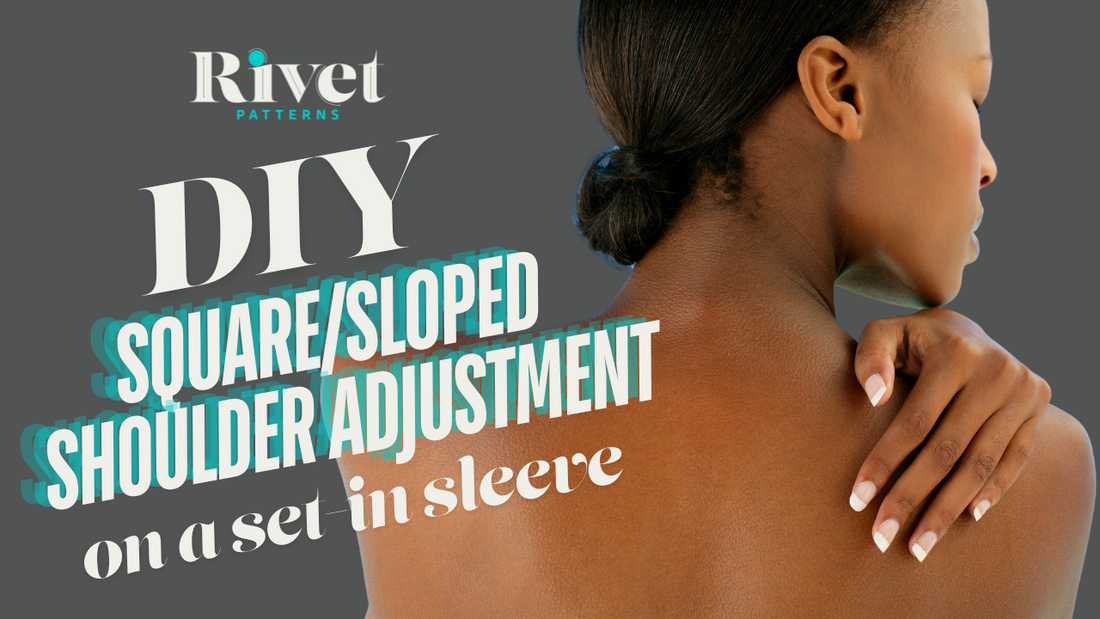In this post, we are going to talk about Shoulders! Specifically, how to do a Square or Sloped Shoulder Adjustment for a Set In Sleeve, but I'd like to quickly touch on shoulders in all of their manifestations.
Shoulders can be broad or narrow, meaning the actual LENGTH of the pattern's shoulder line needs to be longer or shorter to accommodate. Shoulders can be square or sloped, meaning that the ANGLE of the shoulder is more horizontal or vertical than that of the pattern. Shoulders can also be forward or backward, meaning that the shoulder line of the pattern needs to shifted forward or backward to match the line of the wearer.
For a visual explanation of these differences, check out this video: It is entirely possible to need more than one, or all three, shoulder adjustments.
If you would like to follow along with me on video, you can find us over on YouTube.
A square or sloped pattern adjustment is focusing on the ANGLE of the shoulder seam. A square shoulder means your shoulder angle is more horizontal. You'll probably see a top jut up at the neckline, and drag lines pointing towards the sleeve cap end of the shoulder line. On the other hand, a sloped shoulder means your shoulder angle is more vertical. You'll have excess fabric at sleeve cap end of the shoulder line, resulting in excess fabric/folds around the armscye.

We are going to draw two lines. The first line will be a vertical line, just to the inside of the armscye. If you start your line approximately 1/3 of the way in to the shoulder line, you'll get it about right. The second line you'll draw horizontally slightly under the armscye to meet up with the first line.


Go ahead and cut that part out. You will have two pieces: the main body, and the part that contains the armscye. Now, it's time to make our adjustment!


SQUARE SHOULDER:
To reduce the slope of the shoulder, you will slide the entire armscye upwards by the necessary amount. Using a straight ruler, draw a line from the shoulder point to neck point, giving you a new shoulder line. Draw a gentle line from the bottom of the armscye back to the bodice side seam and blend.


Keep in mind, when you make this adjustment, you also lengthen the side seams. You will need to shorten the bodice at the side waist to keep the original side seam length. Repeat this exact process on the back bodice, and you'll be good to go!
SLOPED SHOULDER:
To increase the slope of the shoulder, you will slide the entire armscye downwards by the necessary amount. Using a straight ruler, draw a line from the shoulder point to neck point, giving you a new shoulder line. Draw a gentle line from the bottom of the armscye back to the bodice side seam and blend.


Keep in mind, when you make this adjustment, you also shorten the side seams. You will need to lengthen the bodice at the side waist to keep the original side seam length. Repeat this exact process on the back bodice, and you'll be good to go!
Happy Making!
Rachelle

